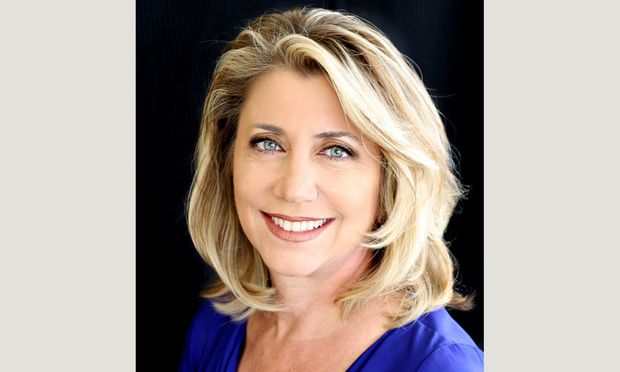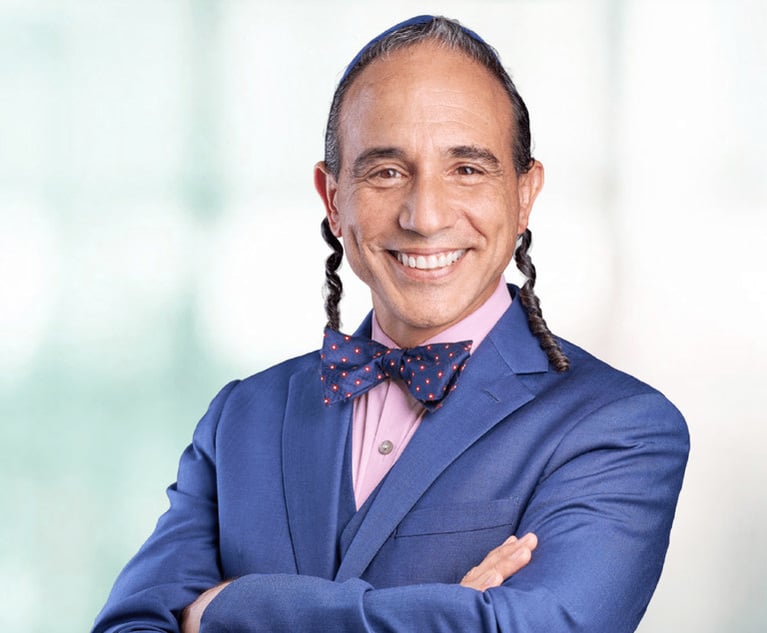How Organizations Are Addressing the Active Shooter Risk
Wherever a crowd gathers, it may now be reasonable to assume that organizations will be asked by society about measures undertaken to protect patrons and invitees from harm, and if an incident occurs, about the reasonableness of their failure to protect.
September 16, 2019 at 10:29 AM
5 minute read
 Anita Byer, president of Setnor Byer Insurance & Risk in Plantation, Florida.
Anita Byer, president of Setnor Byer Insurance & Risk in Plantation, Florida.
Recent incidents in El Paso, Texas and Dayton, Ohio, along with mass shootings that have been occurring on an almost weekly basis in United States since 2013, remind us that we are no longer dealing with "once in a lifetime" tragedies, but with disturbingly regular occurrences that some may describe as "sufficiently foreseeable." Wherever a crowd gathers, it may now be reasonable to assume that organizations will be asked by society about measures undertaken to protect patrons and invitees from harm, and if an incident occurs, about the reasonableness of their failure to protect.
The frequency and severity of active shooter incidents and other acts of violence have businesses and organizations, including houses of worship, educational institutions and event organizers, on high alert. A study conducted by the Federal Bureau of Investigation found that nearly half of all active shooter incidents occurred in areas of commerce. The list of places where incidents have occurred is already long and continues to grow, so many organizations are undertaking a realistic risk evaluation to determine what reasonable safeguards can be implemented to effectively eliminate or minimize the risk and at what cost.
The direct loss and damage caused by an incident can be extensive and severe, but liability claims made by victims and survivors pose perhaps the biggest threat to an organization's future. Those having any involvement with an incident or connection to the shooter are likely to be sued, including property owners, business owners and employers. Others can be sued as well. The owner of the Las Vegas Mandalay Bay resort was sued following the country music festival mass shooting. The concert promoter was sued too. Lawsuits have been filed against security companies, law enforcement agencies, employees and contractors.
Lawsuits commonly assert claims of negligence as the basis for holding an organization legally liable for an active shooter incident. Negligence typically occurs when someone fails to behave with the level of care that someone of ordinary prudence would have exercised under the same circumstances. Premises liability and negligent security claims are routinely brought against those who own, manage or maintain the area where an incident occurred. A shooter's employer is likely to face claims of negligent hiring or negligent retention.
Proving negligence in these cases isn't easy, but the dramatic increase in active shooter incidents could be making it a bit easier for victims and survivors. That's because the extent of one's legal duty of care to another often turns on whether the harm was foreseeable. Defendants have successfully argued that active shooters are not sufficiently foreseeable to create a duty of care. Without a duty of care, the argument goes, there can be no negligence. However, as active shooter incidents increase in frequency, severity and notoriety, defendants will have a harder time disclaiming liability on the grounds that the incident wasn't foreseeable.
Businesses and organizations, even those with a moderate risk, are now consulting risk managers and insurance professionals to evaluate existing risk management protocols and insurance coverages in the context of this emerging threat. Concerns about appropriate risk financing levels, insurance limits and managing the aftermath are being openly discussed. Questions are being asked about the role active shooter and other acts of violence (active shooter) insurance can play in financing the risk and whether the product offers an affordable solution.
While active shooter insurance is affordable, it may not be the appropriate answer to the risk, particularly for those with little foot traffic and reasonable premises security measures already in place, such as doors that automatically lock and cameras that monitor visitors. These low-risk insureds should, nonetheless, contact a professional about conducting a risk assessment. But, for businesses and organizations with broader risk exposures, including those with significant foot traffic, active shooter insurance provides an affordable solution that should be considered.
Active shooter policies can vary among insurance companies and may include policy language that excludes acts from workplace violence or limits the definition of a "triggering event." Some policies are broad and will provide primary liability protection, as well as voluntary coverage for victim expenses related to medical, dental and psychiatric care, rehabilitation, disability, death benefits and funeral expenses. Coverage is also available for business expenses related to loss or interruption of business income, extra expenses, public relations, crisis consultants, employee counseling and additional or temporary security measures.
This is an admittedly difficult discussion to have, but one that is necessary to address this rapidly evolving and expanding risk. Have this discussion today, and rest knowing that you've taken the necessary action to protect your company, workforce and invitees.
Anita Byer is the president of Setnor Byer Insurance & Risk in Plantation, Florida.
This content has been archived. It is available through our partners, LexisNexis® and Bloomberg Law.
To view this content, please continue to their sites.
Not a Lexis Subscriber?
Subscribe Now
Not a Bloomberg Law Subscriber?
Subscribe Now
NOT FOR REPRINT
© 2025 ALM Global, LLC, All Rights Reserved. Request academic re-use from www.copyright.com. All other uses, submit a request to [email protected]. For more information visit Asset & Logo Licensing.
You Might Like
View All
Turning the Shock of a January Marital Split Into Effective Strategies for Your Well-Being
5 minute read

Trending Issues in Florida Construction Law That Attorneys Need to Be Aware Of
6 minute read
Trending Stories
Who Got The Work
J. Brugh Lower of Gibbons has entered an appearance for industrial equipment supplier Devco Corporation in a pending trademark infringement lawsuit. The suit, accusing the defendant of selling knock-off Graco products, was filed Dec. 18 in New Jersey District Court by Rivkin Radler on behalf of Graco Inc. and Graco Minnesota. The case, assigned to U.S. District Judge Zahid N. Quraishi, is 3:24-cv-11294, Graco Inc. et al v. Devco Corporation.
Who Got The Work
Rebecca Maller-Stein and Kent A. Yalowitz of Arnold & Porter Kaye Scholer have entered their appearances for Hanaco Venture Capital and its executives, Lior Prosor and David Frankel, in a pending securities lawsuit. The action, filed on Dec. 24 in New York Southern District Court by Zell, Aron & Co. on behalf of Goldeneye Advisors, accuses the defendants of negligently and fraudulently managing the plaintiff's $1 million investment. The case, assigned to U.S. District Judge Vernon S. Broderick, is 1:24-cv-09918, Goldeneye Advisors, LLC v. Hanaco Venture Capital, Ltd. et al.
Who Got The Work
Attorneys from A&O Shearman has stepped in as defense counsel for Toronto-Dominion Bank and other defendants in a pending securities class action. The suit, filed Dec. 11 in New York Southern District Court by Bleichmar Fonti & Auld, accuses the defendants of concealing the bank's 'pervasive' deficiencies in regards to its compliance with the Bank Secrecy Act and the quality of its anti-money laundering controls. The case, assigned to U.S. District Judge Arun Subramanian, is 1:24-cv-09445, Gonzalez v. The Toronto-Dominion Bank et al.
Who Got The Work
Crown Castle International, a Pennsylvania company providing shared communications infrastructure, has turned to Luke D. Wolf of Gordon Rees Scully Mansukhani to fend off a pending breach-of-contract lawsuit. The court action, filed Nov. 25 in Michigan Eastern District Court by Hooper Hathaway PC on behalf of The Town Residences LLC, accuses Crown Castle of failing to transfer approximately $30,000 in utility payments from T-Mobile in breach of a roof-top lease and assignment agreement. The case, assigned to U.S. District Judge Susan K. Declercq, is 2:24-cv-13131, The Town Residences LLC v. T-Mobile US, Inc. et al.
Who Got The Work
Wilfred P. Coronato and Daniel M. Schwartz of McCarter & English have stepped in as defense counsel to Electrolux Home Products Inc. in a pending product liability lawsuit. The court action, filed Nov. 26 in New York Eastern District Court by Poulos Lopiccolo PC and Nagel Rice LLP on behalf of David Stern, alleges that the defendant's refrigerators’ drawers and shelving repeatedly break and fall apart within months after purchase. The case, assigned to U.S. District Judge Joan M. Azrack, is 2:24-cv-08204, Stern v. Electrolux Home Products, Inc.
Featured Firms
Law Offices of Gary Martin Hays & Associates, P.C.
(470) 294-1674
Law Offices of Mark E. Salomone
(857) 444-6468
Smith & Hassler
(713) 739-1250






